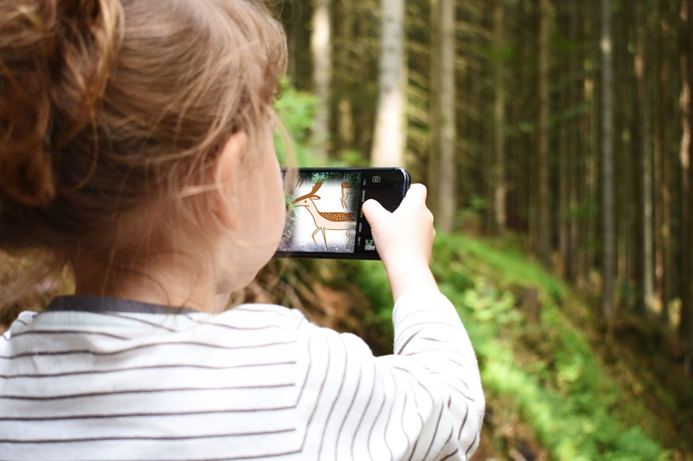Congress Spotlight #70 – Explaining forest research findings to non-scientists: Some tools and ideas to facilitate communication
Communication has been defined as the process of passing information and understanding from one person to another. But, to be effective, the information passed must be in a language and terminology that the person or persons receiving it will understand.

“While the rigor of science and the underlying data can be appreciated by other scientists, wider communications demand more than a peer-reviewed publication,” said Jennifer Hayes, Director, Science Application and Communication, United States Forest Service, Rocky Mountain Research Station and Deputy Leader of the FAO-UNECE Forest Communicators Network.
“The general public want to know why they should care; and decision-makers want to know what the data means and how they should interpret the findings.
“If you can successfully get your message across about why your research is important, it makes everything so much easier – whether it be successfully getting stakeholder buy-in, informing sound forest management decisions, or sharing good reasons to continue funding your research,” Ms. Hayes said.
Ms. Hayes is the session organizer for: Delivering and communicating forest science for people and a greener future at the IUFRO World Congress in Curitiba, Brazil this fall.
For scientists, she said, in terms of communicating more widely, there can sometimes be fear of dealing with the media, or fear of colleagues’ reactions to their interviews, or a lack of time – or interest – in carefully honing messages and, in some cases, there is simply an apathetic attitude toward communication.
“Our session hopes to address multiple aspects of these obstacles and issues. We will hear from scientists – 10 of them – who are successfully communicating their research and learn from their experiences (e.g. climate simulation experiences in Kenya). We will deep-dive into some specific communication tool use and from this will see how some of those tools might be applied to other topics (e.g. augmented reality).
“And, we will look at how we are helping inform the next generation about the importance of forests and forest management,” she said.
“As communicators, we’re working with scientists to co-produce knowledge about best practices – figuring out what works for a given audience,” she said. “We are trying to create an informed public that knows at least a little bit about how forest science relates to the world around them, and this is where many tools can play a role.
“If, for
example, we are looking to help a small, rural landowner help improve a
food forest’s productivity, we might possibly find a visual flow chart,
an in-person consultation, or a publication most useful,” Ms. Hayes
said.
“On the other hand, if we’re trying to share a message
widely about science findings that predict wildfire potential for a
season, we might use social media, press conferences, webinars, or email
blasts.”
One of the challenges is that a lot of people in the general public don’t even know where to go to access science, or they don’t have the time to sort through hundreds of publications on a topic. So synthesizing and then creating easily understandable communication that highlights findings is crucial.
“I think one critical skill is for scientists to be able to use simplified (non-technical) language so they can summarize, in 30 seconds or less, why what they do is important,” Ms. Hayes said.
“I suggest to the scientists I work with that they ask a neighbor or a relative who does not work in natural resources to listen to their summary and see if they understand it.
“Then they have the listener repeat back what they heard. Usually the person paraphrasing it back does it in a shorter amount of time than the researcher and, they only hold onto and repeat back what – to them – is the most important information. It helps the scientist see what resonates, and what needs work.
“Obviously,” she added. “This won’t work for all forest science. But we are seeing a rise in popularity of info-graphics and text-over videos and short snips. That’s because they are accessible and people can view them anywhere from their phones in short segments that do not require a lot of their time to digest.”
She pointed out that “the public sees some of what happens related to forest management as ‘bad’ for forests, when in fact it is good for forests and the species that depend on them. Research can help shift perspectives by providing scientific proof of how activities positively, negatively, or neutrally impact forests – this information can then be used to help shape policy.”
“We hope participants will learn practical skills, get ideas for techniques and approaches they can use, and create a network of others interested in better communicating their research. They should feel empowered to get out there and interact with the public and non-scientists about their research and why it matters,” Ms. Hayes concluded.
There will also be a Congress sub-plenary session on forest communication on 1 October with Ms Hayes as one of the speakers.
See you at the IUFRO 2019 World Congress!
Visit http://iufro2019.com/ * Look out for #IUFRO2019 on Twitter and XXV IUFRO World Congress 2019 on Facebook
View all IUFRO Spotlights at http://www.iufro.org/media/iufro-spotlights/

Leave a Reply